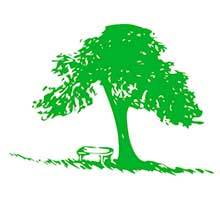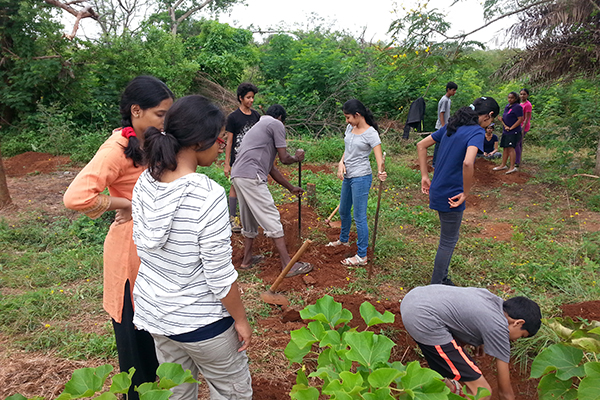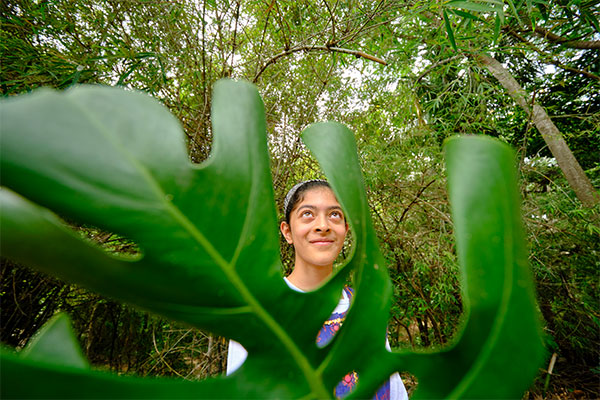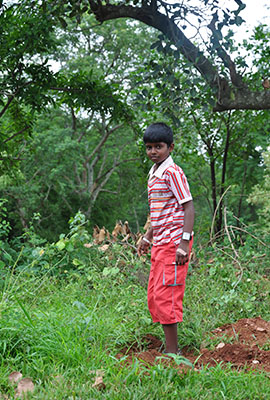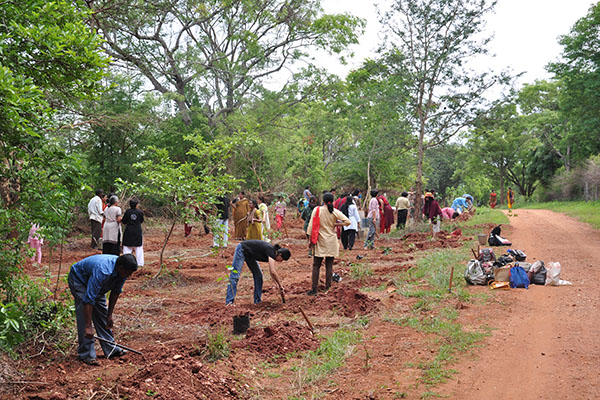Conserving nature is a way of life in the valley. Children and adults are sensitive to the environment of which we are a miniscule part as the human species. A sense of respect, care and concern exudes from every individual. The verdant forest that the valley is today because of the consistent efforts in afforestation, planting indigenous tree saplings and taking care of them with affection. Natural vegetation of shrubs and herbs have been allowed to regenerate , with little or no intervention by the humans.

This has naturally led to a rich variety of flora and fauna, including rare plants of medicinal value, safe harbouring of several endangered species of wildlife including the slender loris and the Indian rock python. The dense forest cover at the valley offers a secure buffer zone for larger mammals including the panther, elephants and a variety of deer species. Over 250 species of birds have been sighted and documented in the Valley.
Conserving water as a precious resource has been a priority. Besides constructing a number of water bodies to harvest and store rain water, we have undertaken to construct trenches, reclaim dried streams and desilting the existing water bodies in order to conserve rain water. In addition, reducing water consumption and recycling the consumed water are regular attempts at the Valley. It is unfortunate Water as a life resource is being misused and depleted by fast growing urban projects and children need to be sensitized about this growing concern.
As a part of the learning program, Land Care is integrated into the curriculum. It is an ongoing process throughout the year for the children up to class 8 and seasonal for those in Senior School. The children especially in the middle and senior school, plant tree saplings, water them, remove weeds and protect them from grazing cattle in the initial few years. The junior school children maintain their own garden in front of their classroom.
Acres
Tree Species
Water Bodies
Bird Species
Snake Species
The food waste from the dining hall is recycled, composted and converted into manure and used to nourish the trees and plants. Children are involved in creating basins around the trees, collecting dry leaves for mulching and manure, applying the manure for plants and trees on a regular basis etc.
The boundary of the campus is demarcated as a ‘live fence’, using cacti; thorny shrubs indigenous to Karnataka are planted along the fence. This not only prevents the forest fire from entering the campus, but also survives the drought, as they remain green even during summer. The children involve themselves in collecting and planting indigenous shrubs and cacti. Last year a natural way of rain water harvest was experimented by constructing trenches along the slope of the land.
This was carried out by the senior school students. Apart from these they also involve themselves to collect the litter in the campus every month and make it a litter free zone.



